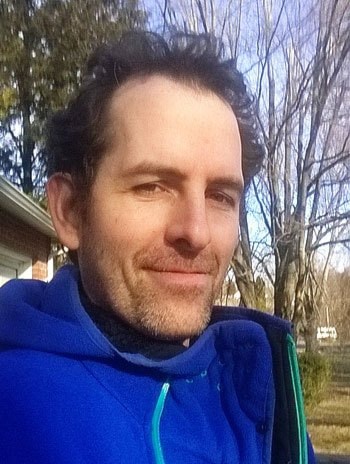The story goes that the rock monster eagle used to swoop down and carry people off to feed to his children in a nest on top of a tall rock.
One day, the monster slayer decided to kill the eagle. So he allowed the eagle to pick him up and bring him to his nest. But before the eagle could feed him to his nestlings, the monster slayer shot him with an arrow. When monster’s mate returned with another human to feed to her children, the monster slayer shot her, too.
The monster slayer then spoke to the two nestlings and agreed not to kill them. Instead, one of them became the golden eagle and the other became the owl.
Then the monster slayer left, taking the hearts of the eagles with him.
Now, that’s just one version of the story. There are many, each slightly different from the others.
But the stories all have certain elements in common. In every story, the eagles are killing people, and have to be destroyed by a hero for humans to thrive. They always feed humans to their nestlings. The hero is always brought to the nest and either kills the eagles or finds a way to escape. Bows and arrows are often used.
The similarities between these stories tell us a lot about the history of the different indigenous peoples that speak Athabaskan languages, according to Joseph Wilson, an anthropologist and instructor at Fairfield University in Connecticut.
Wilson will be giving a talk via Skype at the Beringia Centre this Saturday, as part of a Long Ago Yukon series called “Encounters With First Peoples.”
And he’ll be defending a somewhat controversial theory - that the Athabaskan people and their languages spread across North America, from western Alaska to Hudson Bay and south to northern California, in about 400 years, between 900 and 1,300 A.D.
That’s fast. Faster than most of his colleagues have proposed, Wilson said.
Today, Athabaskan-speaking people include the Northern and Southern Tutchone, Dene, Kaska, Gwich’in, Tahltan and Tlicho people in the Canadian North, many First Nations in interior B.C., and Navajo and Apache Native American tribes in the U.S.
Wilson calls the migration of the Athabaskan languages “the largest and fastest pedestrian language spread in the world.”
“It happened overnight,” he said.
And that monster slayer folklore plays a key role in his theory. Wilson said the fact that so many elements are consistent between the stories “suggests that they moved quite rapidly.”
The languages, too, are very similar. “Athabaskans are quite uniform in their speech and in their folklore,” Wilson explained. He drew a comparison to the differences between Spanish and Portuguese. Someone fluent in one language, he said, would more or less be able to understand the other.
So what explains this rapid migration across North America? Wilson thinks it has a lot to do with weapons, and with Asia. Around the time the Athabaskan migration started, he explained, there was a period of “intense imperial warfare” in Eurasia.
Wilson thinks that conflict may have spilled across into North America.
“Imagine refugee soldiers from frontier garrisons in north Asia who were defeated by enemies in some geopolitical struggle and embarked on flights into the tundra,” he said.
And when they came across the water, they likely brought their weapons with them, especially their bows and arrows.
That means that many Athabaskan Alaskans might have fairly recent Asian ancestors, as well as those who’d been in North America for much longer.
Wilson believes the appearance of a powerful weapon like the bow and arrow would have helped the Athabaskans to become dominant and spread rapidly throughout the continent, bringing their language with them.
That would also explain the appearance of the bow and arrow in so many Athabaskan myths.
The clincher, Wilson said, is that there are Siberian languages that seem to be related to the North American Athabaskan languages.
“There’s a suggestion that the word for ‘bow’ in Yeniseian (a Siberian language) is the same as the word for ‘arrow’ in Athabaskan, so there’s clearly a connection,” he said, adding that the Siberians seem to have at least one mythological story that’s very similar to the Athabaskans’.
Of course, all of this is subject to debate. Wilson said there is some genetic evidence to suggest that Asian males mixed with Athabaskans in the not-too-distant past. But it’s not conclusive.
And clues are being lost all the time, as more and more Athabaskan languages go extinct from lack of use. Already, much of Wilson’s linguistic research is based on records from the 1920s and 30s.
“Most of these languages are not spoken very much anymore, and most of these stories are not told very much anymore,” he said. “Most of them are critically endangered.”
It’s estimated there are upwards of 50 Athabaskan languages, though many are spoken by fewer than 100 people. Chipewyan is one of the more widespread languages, and still has roughly 12,000 native speakers.
But Wilson said his research does more than illuminate the possible history of the Athabaskan languages.
He believes it’s also giving the lie to a pervasive stereotype about Athabaskan peoples.
“Athabaskans are stereotyped as being extremely primitive,” he said. Because Athabaskan peoples traditionally lived in less complex societies, he said, they were assumed to have borrowed their religion and folklore from other indigenous groups.
But in fact, Wilson said, the Athabaskans may have been the source of these stories, which then spread to other peoples.
“My argument is that we have been making all kinds of assumptions about what the original Athabaskan culture was ... not based on any real evidence,” he said.
“Don’t assume… that the Athabaskans were a blank slate onto which other cultures painted a mirror of themselves. It ain’t necessarily so.”
Wilson will be speaking via Skype at 1 p.m. on Saturday, March 5 at the Beringia Centre. For more information, visit www.facebook.com/LongAgoYukon.
Contact Maura Forrest at
maura.forrest@yukon-news.com
